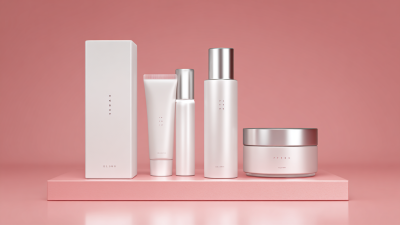![]() 3606 E. Chapman Ave, Orange, CA 92869
3606 E. Chapman Ave, Orange, CA 92869
![]() Contact us: 714-743-4914
Contact us: 714-743-4914
![]() 3606 E. Chapman Ave, Orange, CA 92869
3606 E. Chapman Ave, Orange, CA 92869
![]() Contact us: 714-743-4914
Contact us: 714-743-4914
Unlock Radiant Skin with the Ultimate Guide to Facial Peels for Every Skin Type
In the quest for luminous and healthy skin, facial peels have emerged as a popular solution across various skin types, offering benefits that cater to individual needs. According to the American Society for Dermatologic Surgery, over 1.3 million chemical peel procedures were performed in the United States alone in 2020, underscoring the growing trend of skincare rejuvenation methods. As facials and skincare routines evolve, the importance of understanding the right type of peel for your skin becomes paramount. Whether dealing with acne scars, sun damage, or signs of aging, the right facial peel can rejuvenate the skin while minimizing potential risks. This ultimate guide will provide vital tips for selecting and applying facial peels tailored to different skin types, helping you unlock the secret to radiant skin.

Understanding Facial Peels: Key Techniques for Your Skin Type
When it comes to achieving radiant skin, understanding the various types of facial peels is essential.
Different skin types require tailored approaches; thus, recognizing your skin’s unique needs is the first step in this transformative journey.
For oily and acne-prone skin, chemical peels containing salicylic acid can effectively exfoliate and unclog pores.
These peels help to reduce breakouts while promoting smoother skin texture.
Conversely, those with dry or sensitive skin might benefit from more gentle exfoliants, such as lactic acid peels.
These types are hydrating and can help to remove dead skin without causing irritation, making them perfect for maintaining a healthy glow.
Furthermore, for individuals aiming to combat signs of aging, retinol-infused peels can stimulate collagen production and encourage cellular turnover.
By understanding your skin type and the corresponding techniques suitable for it, you can unlock the full potential of facial peels, paving the way for a brighter, more luminous complexion.
The Science Behind Chemical Peels: How They Work on Different Skin Types
Chemical peels have gained significant attention in the skincare industry for their ability to enhance skin texture and appearance. According to a report by the American Society for Dermatologic Surgery, over 1 million chemical peel procedures were performed in the United States in 2020 alone, highlighting their growing popularity. The process involves the application of a chemical solution to the skin, which exfoliates the top layers and reveals healthier, more radiant skin underneath. The efficacy of these peels largely depends on the skin type and the chemical solution used, making it essential to choose the right peel for optimal results.

Different skin types respond uniquely to various chemical peels. For instance, patients with oily or acne-prone skin often benefit from salicylic acid peels, which penetrate deep into the pores to reduce oiliness and clear breakouts. Conversely, individuals with dry or sensitive skin may achieve better results with milder glycolic acid peels, which provide hydration while exfoliating. A study published in the Journal of Cosmetic Dermatology indicated that 92% of participants reported satisfaction with their results after a series of tailored chemical peels. Understanding the science behind how these peels work allows individuals to select treatments that align with their specific skin needs, ensuring a safer and more effective journey to achieving radiant skin.
Comparative Analysis of Popular Peeling Agents: AHAs, BHAs, and TCA
Facial peels are a vital component of skincare, tailored to meet various skin needs. Among the popular peeling agents, Alpha Hydroxy Acids (AHAs), Beta Hydroxy Acids (BHAs), and Trichloroacetic Acid (TCA) stand out for their efficacy and versatility. AHAs, derived from fruits, are water-soluble and primarily target surface-level concerns like dryness and uneven texture. According to a 2021 study published in the Journal of Cosmetic Dermatology, 70% of participants reported improved skin texture after a series of AHA peels, highlighting their popularity for hydrating and exfoliating the skin.
On the other hand, BHAs, which are oil-soluble, penetrate deeper into the pores, making them a preferred choice for oily and acne-prone skin types. A comparative analysis by the American Academy of Dermatology found that 75% of patients using salicylic acid (a commonly used BHA) saw significant reductions in breakouts over 12 weeks. TCA, a stronger peeling agent, is often reserved for more dramatic results and deeper skin concerns like scarring and pigmentation issues. According to a clinical report in Dermatologic Surgery, TCA peels led to a 60% improvement in acne scar appearance among participants, underscoring its effectiveness for those seeking profound skin rejuvenation.
Comparative Analysis of Popular Peeling Agents: AHAs, BHAs, and TCA
Safety Guidelines and Aftercare Tips for Optimal Peel Results
 When considering facial peels, it's crucial to prioritize safety guidelines to achieve the best results for your skin. Before undergoing a peel, consult with a certified dermatologist to determine the most suitable type for your skin type and concerns. Make sure to inform them about any medications you are taking, as certain prescriptions can increase skin sensitivity. Also, performing a patch test 48 hours before the procedure can help avoid adverse reactions.
When considering facial peels, it's crucial to prioritize safety guidelines to achieve the best results for your skin. Before undergoing a peel, consult with a certified dermatologist to determine the most suitable type for your skin type and concerns. Make sure to inform them about any medications you are taking, as certain prescriptions can increase skin sensitivity. Also, performing a patch test 48 hours before the procedure can help avoid adverse reactions.
Post-peel care is equally important for optimal results. Immediately after the treatment, your skin may feel sensitive; therefore, it's essential to keep it hydrated. Use a gentle moisturizer and avoid products containing harsh ingredients such as retinoids and alpha hydroxy acids for at least a week. Additionally, always apply a broad-spectrum sunscreen with an SPF of 30 or higher to protect your newly treated skin from UV rays, which can cause further damage.
Tips: Avoid scrubbing or exfoliating your face for at least a week post-peel, as this can irritate your skin. Instead, opt for a gentle cleanse and pat your face dry with a soft towel. Drinking plenty of water and incorporating anti-inflammatory foods into your diet can also help your skin heal and maintain its glow.
Choosing the Right Peel: Expert Recommendations Based on Skin Concerns
When it comes to achieving radiant skin, facial peels can be a game-changer. However, choosing the right peel depends significantly on your specific skin concerns. Whether you’re dealing with acne, pigmentation, fine lines, or dullness, understanding the type of peel suited for your skin can help you achieve the best results.
**Tips: Identify Your Skin Type**
Before opting for a peel, it's essential to identify your skin type. For oily and acne-prone skin, consider salicylic acid peels, as they penetrate deep to reduce blemishes. If you're struggling with hyperpigmentation or sun damage, glycolic acid peels can effectively exfoliate and brighten your complexion. For sensitive skin, a gentle lactic acid peel is the best option, promoting renewal without causing irritation.
**Tips: Consult a Professional**
Always consult a skincare professional to assess your skin's needs accurately. They can recommend the appropriate peel strength and concentration that aligns with your concerns. Additionally, understanding post-peel care is crucial; using a soothing moisturizer and applying sunscreen diligently can protect your newly radiant skin from potential damage.
Unlock Radiant Skin with the Ultimate Guide to Facial Peels for Every Skin Type
| Skin Type | Recommended Peel | Primary Concerns | Post-Peel Care |
|---|---|---|---|
| Oily | Salicylic Acid Peel | Acne, Large Pores | Hydrating moisturizer, SPF |
| Dry | Lactic Acid Peel | Dryness, Dullness | Moisturizing cream, gentle cleanser |
| Sensitive | TCA (Trichloroacetic Acid) Peel | Redness, Irritation | Avoid harsh products, soothing serum |
| Combination | Glycolic Acid Peel | Uneven Texture, Oily T-Zone | Lightweight moisturizer, sunscreen |
| Mature | Jessner's Peel | Fine Lines, Age Spots | Moisturizing treatment, minimize sun exposure |



